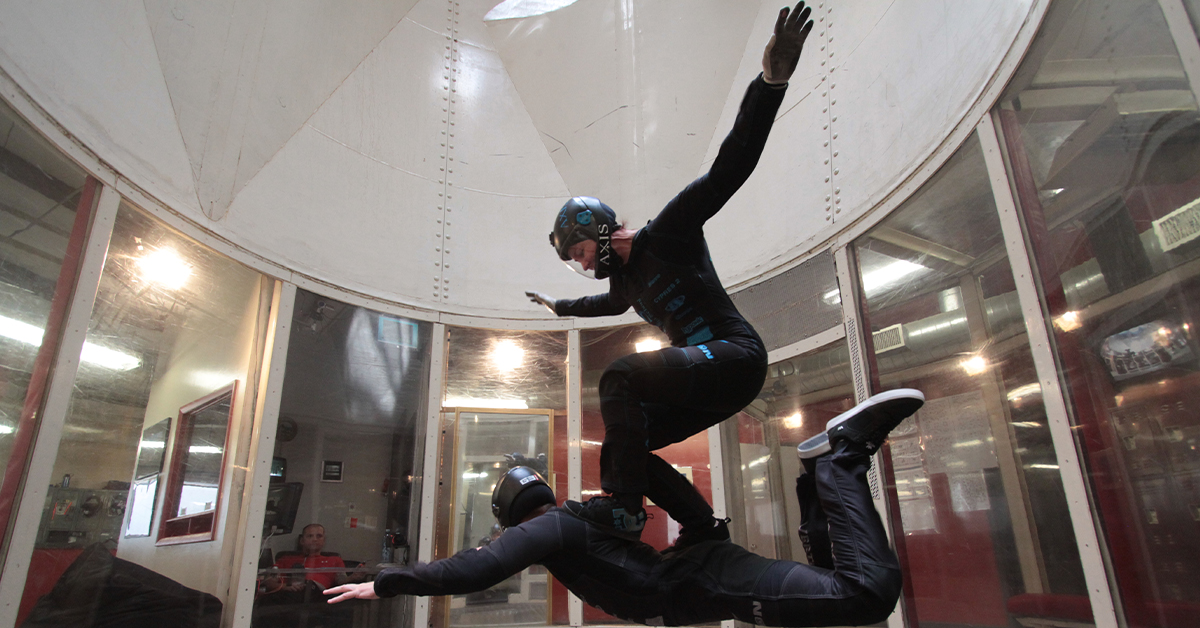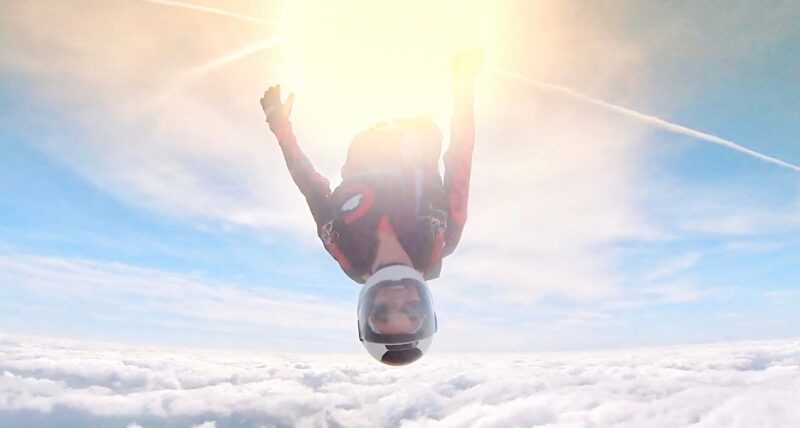Bigway-bound or not, it’s the foundation for everything you do next
By Fleur Jones (Facebook /Instagram /YouTube @FlywithFleur)
All images courtesy of AXIS Flight School
Jimmy McCarthy: “Thank you for making my job so much easier.”
Me: “How so?”
Jimmy: “By teaching people how to belly fly properly.”
That exchange has stuck with me for years, not just because it’s a cracking compliment from my own coach, but because it’s made me think long and hard about what it really means.
Let’s be honest, there’s a lot of pressure to freefly like a boss, right? I see so many newer jumpers itching to bin their belly-flying-“toddler” status and start throwing shapes like the cool kids. I watch a lot of hard-earned cash being thrown at the prospect of TR1 and TR2 stickers, bundled up with dreams of tracking insouciantly across the skies like an aspirational video billboard for some sexy new cologne.
Hang on, though. Before you start flinging time and money at those Gucci-level moves, let’s take a step back and make sure your stitching won’t unravel immediately upon exit.
Why strong belly flying unlocks the world after belly
Why is being a solid belly flyer so important if freeflying is the goal? How does all that basic belly work help you smash your tracking, VFS and/or wingsuit ambitions? I have my own ideas, of course. But to give you the very best answer, I asked a few top freefly and tracking/wingsuit coaches for their take.
“You can’t be a good free flyer without being good at belly! It’s where it all starts, and lots of the static positions you learn along the freefly journey use the front of your body, so you have to build that awareness.
Plus, all of the dynamic moves will use belly skills – or at least elements of how you control your front – as you move seamlessly from position to position. You may not need to master it before starting freefly or tracking, but you’ll find yourself back there or using it again quite soon!”
– Ryan Arkle

Ryan’s spot on.
I’ve watched an ex-student of mine (who, tragically, bailed on belly coaching a bit too soon) struggle with backflying in the tunnel, get frustrated, then try tracking jumps and eventually return to one-to-one belly coaching. They worked it out the hard way: you can’t skip the basics.
“If someone’s an excellent belly flyer when they start learning to freefly, they already have the discipline needed to freefly. All they’re learning is the new skill. If, on the other hand, they skip learning belly flying properly, they’re learning both the discipline and the skill at the same time, which is much harder.
You’ll develop much better body control if you learn to fly well on your belly first. If people struggle with the easiest position to learn and fly, which is belly flying, they’re really going to struggle with freefly skills. That extra time on your belly develops overall awareness of the air and how your body is influenced by, and can influence, the wind. If I’m coaching someone with more belly experience, I know they’ll progress more quickly.”
– Ally Milne
I couldn’t agree more. Even today, I get messages from students desperate to “get onto that freefly stuff” with barely any belly experience; or determined to nail a ‘T’ pose and splits before they’ve even got 4-way signed off.
I’m legitimately sorry to burst your bubble. It’s just that I’ve learned, over years of watching it happen, that a lot of time and money can be thrown at these skills unnecessarily by super-keen folks who haven’t quite nailed good belly flying, and I don’t want that frustrated (and, well, poorer) person to be you.
“A lot of what helps you learn new skills faster comes down to body awareness. In static positions, we can concentrate on our posture and hope it’s what we aimed at, but I’m convinced that we train our awareness more effectively in motion. A static body position in tracking is useful; the more constant moving of our bodies in relative work teaches us more for the ultimate goal of tracking and wingsuit flying.”
– Sam Laming
By learning to stay still and demonstrate great posture on your belly, you’re developing the perfect skills for tracking. Moving fluidly and with control on your belly dials in the basics for wingsuiting.
Here’s a fun little secret, I never had coaching in tracking. I went from being a solid belly flyer to flocking a 9-way in a wingsuit camp at Lake Elsinore overnight.
Magic? Nope. Science. Great belly skills give you a foundation that supercharges your progress like nothing else.

So what are the belly skills that power freefly?
- Let’s look at some freefly skills that rely on stable, controlled, disciplined belly flying:
- Belly-to-back transitions
- Barrel rolls and breakers
- Layouts (front and back)
- Eagles (regular and reverse)
- Outface carving
- Carving switches
- Freestyle favourites (“T” pose, splits and helicopter spins)
All vertical and edge flying orientations are a composite of belly and back flying skills. That’s how important excellent belly flying control is.
The moral of the story: just don’t skip the basics
Don’t try to run before you can walk. Get your belly skills as sharp as they can be – and revisit them regularly. There’s no better place to do that than in the tunnel with a good belly flying coach. The tunnel is like a magnifying glass: it shows up your weak points, but it also makes your life easier in the long run.
Master the foundations. The rest will come.



